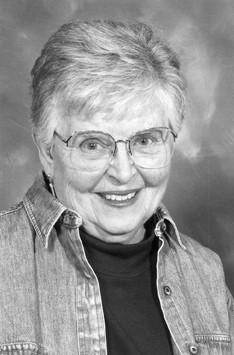Rabbitbrush Rambler: Benefits of a junior college

Some favorite old photographs of Alamosa were made about 100 or more years ago, downtown at the corner of State and Main and at the corner of Sixth and Main, with proud drivers showing off their automobiles for the parades. My guess is that if the machines had refused to start up again, the bankers and storekeepers, teachers and speakers would have had no idea how to make the things run.
Just like my problem one Saturday afternoon in downtown Monte Vista when the old Honda’s starter refused to start. I was lucky, though. First there was the super-polite, pleasant patrolman who, after looking at my ID cards, took charge of contacting my insurance company on his phone and getting a wrecker to come to haul the car to an auto repair shop. No sweat!
This nice patrolman had a name by the way – Patrick. I asked him where he had trained, and he said at Trinidad State Junior College in Alamosa, for some of it.
In the past few years, like others I’ve had my share of emergencies. (After all, they happen, and usually not at convenient times and circumstances.) When I ask responders to emergencies or in hospitals where they got their training, they often reply that it was at Trinidad State Junior College in Alamosa.
Automotive service technology, cosmetology, aquaculture, wildlife, pre-engineering, agribusiness, welding, nursing, and many other courses are offered there to serve the real-world needs of our communities. After getting an associate’s degrees, if a student wants to, he or she can even transfer to a more advanced program where the sky’s the limit.
Our junior and community colleges have many advantages. For one thing, they are close to home, entailing little or no extra costs for housing or extracurricular activities, so they are more affordable. Also, there is no age limit, and many classes are offered in evenings so working people are able to attend classes.
Once upon a time, people had wagons with teams or horses and buggies, whose owners or hired hands usually could figure out some solution themselves. If a horse had a broken shoe, that meant a trip to the farrier. The farrier learned his trade from someone else, but how many farriers would an area need? One.
Life became more complicated with newfangled cars and trucks, garages with mechanics, and other modern conveniences and inconveniences like electric lights flickering on and off, indoor toilets and kitchen sinks, pumps that didn’t pump, not enough capable bookkeepers and nurses and firemen. Folks just didn’t have all the necessary skills, equipment, or time to get things fixed. What was needed were schools where individuals could develop skills and vocations, earn a living, and enjoy personal satisfaction. After all, not everyone is keen on book learning or about attending a college, but many have god-given, practical talents and a desire to use them.
Soon after 1900 the idea of starting public junior colleges caught on in this country, the first being in Illinois. A few years later, Colorado had them, too. Trinidad State Junior College was authorized by the state legislature in 1925, the same year that the first classes began at Adams State Normal School. Classes in Trinidad began in the 1930s in Trinidad High School’s building and later moved up the hill.
Mesa Junior College opened in 1925, Pueblo in 1933, Otero in 1941, Sterling in 1945, Rangely in 1962, and so on as needs existed, and they expanded with community colleges as opportunities arose there. By the 1990s Alamosa had its own campus, a branch of Trinidad State Junior College.
These are public, state institutions, administered within the Colorado Department of Higher Education. We are so lucky to have them.



